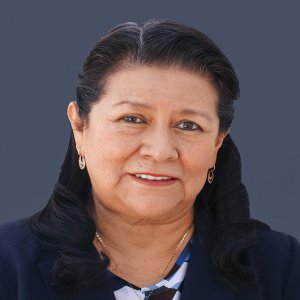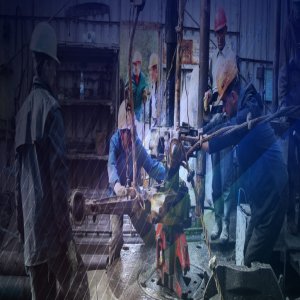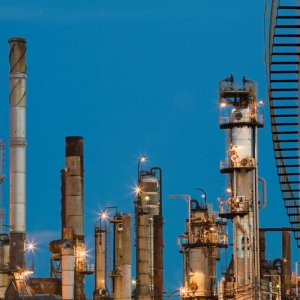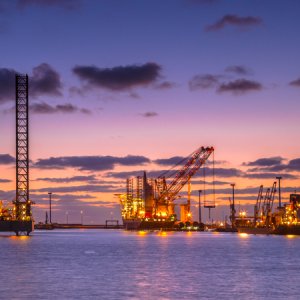Unitization Key to Progress on Zama Reservoir

STORY INLINE POST
Q: What is the significance of the findings of Netherland, Sewell & Associates in its independent report on the geological specificities of the Zama reservoir heading into unification talks?
A: The significance is that the report is not ours. It is the findings of Netherland, Sewell & Associates, one of the most established independent expert engineering firms in the world. They were given access to the physical assets that we collected in our appraisal program and exploration efforts, including the log data, core data, rock property data, and seismic data, with which they were able to tie a geological model together to make a conclusion out of that. They then rendered their opinion; it was a very transparent process. While there are other engineering firms, we think there is enough appraisal data that it would be hard to draw too different of a conclusion from the one that Netherland, Sewell & Associates arrived at.
This was a material effort on the part of Talos Energy, and we informed the market that we would disclose it once completed. It is a good story for all the stakeholders involved in Zama and is also a way for us to report back to our shareholders on the progress we made to give them a sense of the range of outcomes. Before a project is sanctioned, there are different rules that can be used when defining recoverable reserves. Netherland, Sewell & Associates’ “Best Estimate” of 670MMboe in 2C gross recoverable resources are considered contingent until we sanction the project, at which point these barrels become proved and probable. The “Higher Estimate” that the firm gave was up to 1 billion boe for the entire reservoir, not only what is located within our block. But the firm then effectively drew a line stating that of the 670MMboe “Best Estimate” volume, 60 percent of that resides within Block 7.
Q: How has the delay in PEMEX’s well drilling impacted the progress on Zama unitization?
A: We have to get the field unitized and to do that, we must pull the partnership together so that the four companies – ourselves, Premier Oil, Wintershall DEA and PEMEX – can progress with development. Any kind of shared asset needs to be placed into a unit and every jurisdiction has the option of whether it wants to unitize shared resources or allow companies to go after those shared resources separately. In most jurisdictions, whether that be a state or country, agree that unitization is the best avenue for the most efficient development of the asset.
Talos Energy had an obligation to let CNH know if we believed we had a shared reservoir. Clearly, we do, and so we made that known through the Aviso filing. CNH looked at our technical data and agreed with our conclusion that Zama is a shared resource and informed SENER of their opinion. SENER then informed the Block 7 partners and Pemex that they were required to unitize.
This means it is unlikely PEMEX will drill a well before these negotiations are complete. We believe that this is fine because we are very comfortable with what the reservoir looks like on our side and PEMEX’s side. Talos is not thinking about the situation as “ours” and “theirs,” but that this is one reservoir that has already been appraised. If PEMEX drilled a well on their lease line, which is not far from our well, the results would likely look very similar to those we already have and there would be little information gained. Our suggestion all along has been that the drilling of the well is not needed and PEMEX should save the money. We are happy to bring the NOC into the partnership, negotiate the split and the operatorship, so that we can get on with the business of submitting the development plans and ultimately starting construction. We are anxious to start construction but we cannot do this until we have an approved development plan, which cannot be filed until we have a unit that has been fully adjudicated. We are optimistic our period of negotiations, as required by SENER, will lead to a positive result for everyone.
Q: Do these delays and the impact of COVID-19 mean first production will be delayed from the 2023 forecast?
A: Most major projects around the world are delayed because of budgetary changes, a lower commodity price environment, stress in the supply chain because of COVID-19 and the expectation of the delivery of goods and services. For example, BP has announced a change in the timing of the world’s largest LNG projects. All of this is present before unitization even comes into the picture. COVID-19 has had an impact on the ability to negotiate the unitization with travel restrictions and a lack of in-person meetings. First production is more likely to come by the end of 2024 rather than 2023. That said, the construction of a platform in 550ft of water does not happen overnight. We have stated this publicly. Our platform in Block 7 will be the deepest installation of a physical platform in the history of Mexico. This is important to bear in mind. We expect the time frame to be around two and a half years from beginning of construction to first oil.
Q: How will Talos Energy’s US$170 million reduction in capital expenditure for 2020 impact Zama’s development?
A: 2020 was the year of FEED work. We are trying to really understand what the best development plan looks like and what the engineering around that means, including midstream solutions for our block. There is capital involved in this planning, but not to the same figure as drilling or construction: 2020 was never going to be a year of expansive capital expenditure even before COVID-19. Because of this, we have been able to keep our FEED work fully budgeted and are moving full-steam ahead even as we make progress on the unitization.
Last year, we said that there would be three processes we would run in parallel. These were the geological appraisal work carried out by Netherland, Sewell & Associates, the engineering design work, and the unitization negotiations. None of the design work was particularly impacted by the pandemic. The effect of oil prices on the project is not an influence on this year’s aims but it is a decision to be made next year. Hopefully by that time the unitization will be done and PEMEX is in the partnership. We could also look at financing options if necessary. But I think Talos Energy will be in solid shape to keep the development on pace and keep Mexico as a central part of our budgetary outlook.
Q: What actions have been taken to ensure Talos Energy emerges a stronger player post-crisis?
A: The good news about the company is that we have always kept a minimal amount of leverage, meaning our balance sheet is very strong. When we entered Mexico’s offshore arena, Talos Energy was a 25Mb/d company and now we are a 70Mb/d+ company as we exited the 1Q of 2020. We were one of the top performing stocks in the E&P sector in 2019. Thanks to this, we started 2020 in a very competitive position: a strong balance sheet, not a lot of long-term contracts and good hedges. We entered the COVID-19 crisis from a position of strength. Like all companies, we have had to manage changing the capital programs due to the sharp drop in oil prices.
Our hope is that as we enter 2Q20 and 2021, we may be able to think about more M&A activity and other ways to grow the business. As a public company, we want to build ourselves into the position of a large cap company rather than a small or midcap company. This is our ambition and projects like Zama continue to add credibility to that goal.
We have looked at acquisition possibilities in Mexico. There are not a lot of lease rounds and very little private sector production. We could certainly buy into exploration leases and development projects, which we have done before, but we are also looking at producing assets, whether they be in the US GOM, the Mexican side or other jurisdictions around the world. Doing more in Mexico is on the table, but any development we consider must compete with others around the globe. We must consider what is actionable, what is possible in terms of financing and what we can work on at any given time. We have not ruled out M&A activity in Mexico but decisions are made on a case-by-case basis.
Q: Why did Talos choose McDermott for pre-FEED and FEED work on Block 7?
A: McDermott is a great team and we like the fact that the company has offices where we are, in Houston and in Mexico City. The company really understands what we are trying to achieve in Mexico and so McDermott was a good fit. We were familiar with the design team before making the decision and we wanted a team that was capable of providing guidance on the deepest installation in Mexico’s offshore history. We wanted a company that is doing this work in other parts of the world, and McDermott is such a company. There will be another round of decisions that will be made for project execution.
Talos Energy is an American offshore oil and gas company operating on both the US and Mexican side of the Gulf of Mexico. Talos Energy operates Block 7, and discovered the Zama reservoir in 2017, one of the most important discoveries made in Mexico's recent history.








 By Peter Appleby | Journalist and Industry Analyst -
Mon, 09/14/2020 - 11:12
By Peter Appleby | Journalist and Industry Analyst -
Mon, 09/14/2020 - 11:12
















